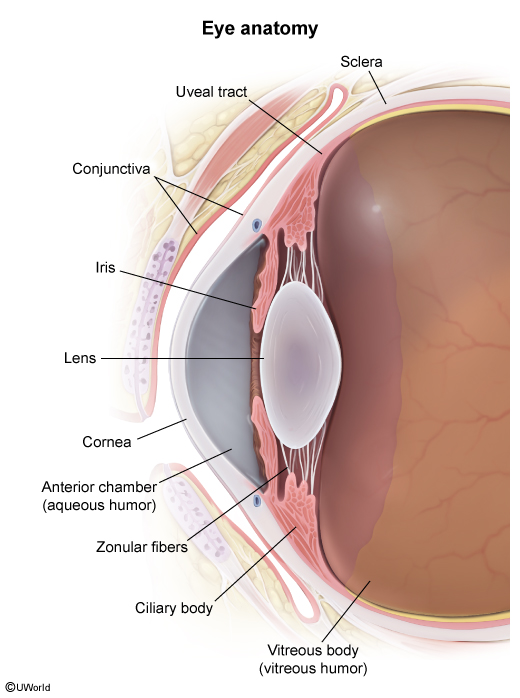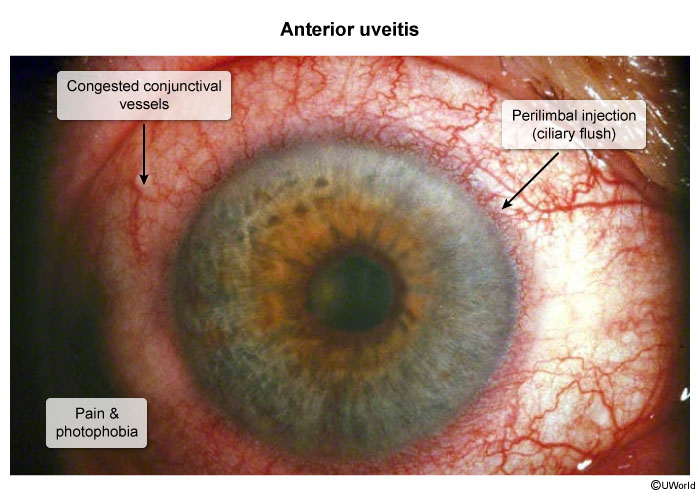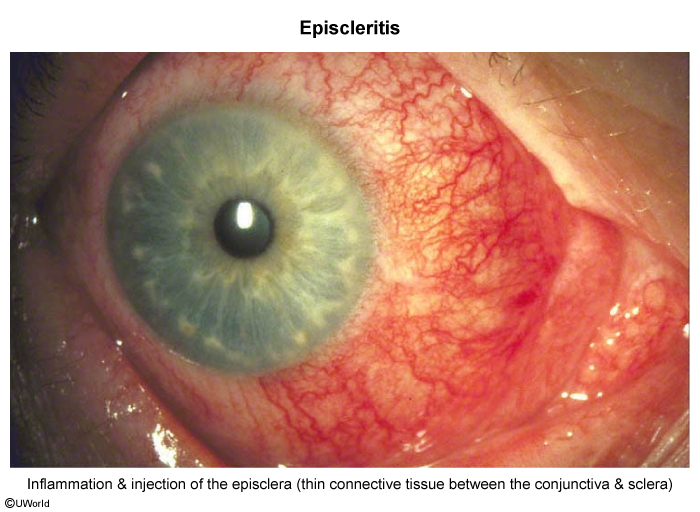Uveitis
Article Sections
Introduction
Uveitis refers to inflammation of the uveal tract, the middle portion of the eye that consists of the iris and ciliary body (the anterior uvea) and choroid (the posterior uvea). Anterior uveitis presents with redness, pain, and photophobia, whereas posterior uveitis typically causes painless vision changes (eg, floaters). Uveitis is often associated with systemic inflammatory conditions (eg, spondyloarthritis) or ocular infections (eg, cytomegalovirus), although many cases are idiopathic.
Anatomy
The uvea is the highly vascular middle layer of the eye that lines the sclera. It comprises the iris and ciliary body (which make up the anterior uvea) and the choroid (the posterior uvea) (Figure 1). The main function of the uvea is to provide nutrition to the eye. The ciliary body produces aqueous humor to nourish the lens and cornea, and the choroid supports the retina.
Continue Learning with UWorld
Get the full Uveitis article plus rich visuals, real-world cases, and in-depth insights from medical experts, all available through the UWorld Medical Library.
Figures

Images

